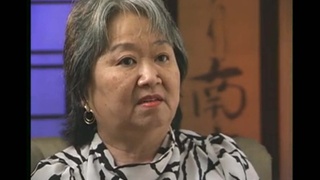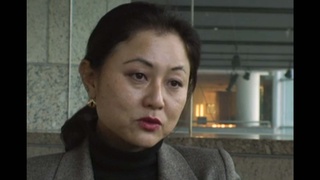Interviews
Skateboarding at Manzanar
Giant Robot once went to Manzanar concentration camp, ‘cause that’s probably one of the more closest ones that we could drive to that kind of has some structural element of what was there, so we went and wrote an article about it. We tried to look at it from a different point of view, because, I always read about it, but you never read about like what’s exactly there, so we actually went there.
And we actually took our skateboards, and we have big wheels on our skateboards, they were made for dirt, so we figured that place was all dirt, so we decided, hey I know there’s hills and stuff, so we decided to try to skateboard around that area just for fun, and by doing that though, we actually explored a lot and found that there’s this great reservoir where you can skateboard in. We actually looked closely at the cement and realized that like the Japanese Americans that actually made that, actually wrote their names, you know, there’s some Japanese American names etched into that cement probably by twigs and rocks or something.
We just thought that that was really interesting that you would never read about, that you just realize that it kind of humanizes the place more, that it wasn’t just this barren landscape. There’s actually like these weird elements of culture that still remains, and I think that’s kind of interesting. That’s what I thought was the coolest part that I’ve never heard of.
Yeah, so when I go to places like that, I always look for things that aren’t necessarily written about, or historical, but stuff that makes me laugh a little, that you know, these guys were just kids there, you know, the people there were just kids, they were just like me, so that’s something I would have done, is etch my name somebody (laughs), with some other people, I mean they never thought that anyone was going to see it, but no, I saw it, just so they know, you know, but I saw it. It’s important, yeah.
Date: November 27, 2005
Location: California, US
Interviewer: John Esaki and Janice Tanaka
Contributed by: Watase Media Arts Center, Japanese American National Museum
Explore More Videos

Not fully understanding parents' World War II incarceration while growing up
(b. 1946) Lawyer

An emotional response from mother upon talking about incarceration experience
(b. 1946) Lawyer

Role of the redress movement in helping Nisei to open up about their wartime experiences
(b. 1946) Lawyer

Not recognizing father after reunion at Crystal City, Texas
(1937 - 2021) Teacher


A child's memories of activities at Crystal City, Texas
(1937 - 2021) Teacher

Thoughts on relationship between Japanese Peruvians and Japanese Americans at Crystal City, Texas
(1937 - 2021) Teacher

Encountering a train full of Japanese Americans being transported to a concentration camp
(b. 1923) Chick sexer

Donating clothes to the Japanese interns (Japanese)
(1900–1996) The mother of Nikkei Brazilian immigration

Interrogation by police (Japanese)
(1900–1996) The mother of Nikkei Brazilian immigration

Concentration camp from a Japanese mother’s point of view (Japanese)
Shin-Issei from Gifu. Recently received U.S. citizenship

Sneaking out of the Hastings Park camp during World War II
(b. 1928) Doctor. Former Chair of the Japanese Canadian Redress Foundation.

Hiding out to avoid the concentration camps (Spanish)
(b. 1932-2016) Peruvian painter

Closing the Japanese school and deportation (Spanish)
(b. 1932-2016) Peruvian painter

